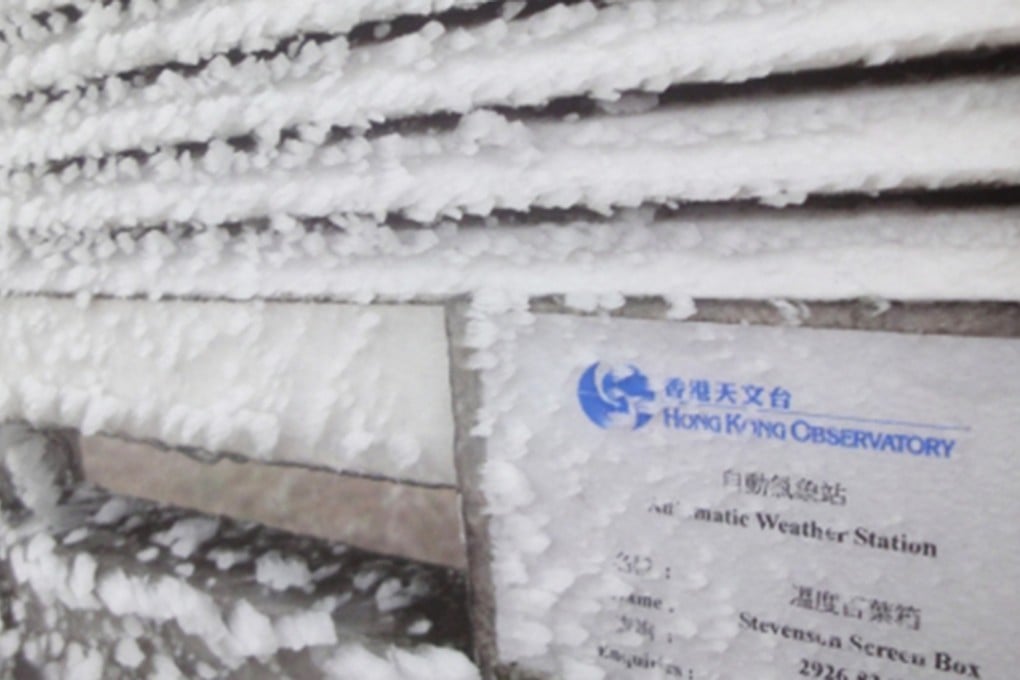Advertisement
‘Intense’ polar vortex could bring ice storm to New Territories: chill running through Hong Kong expected to last a week
History of snow falls and frost in Hong Kong show it’s not impossible it could happen again
Reading Time:2 minutes
Why you can trust SCMP
0

A polar vortex is expected to hit the New Territories but could spare urban areas from frost, ice and sleet over the weekend.
READ MORE: Netflix and chill – how to beat winter when the polar vortex hits Hong Kong this weekend
The Hong Kong Observatory predicts chilling conditions over the coming weekend which some internet commentators have said could bring snow.
While snow may seem unlikely, frost and ice is expected, said Christy Leung, HKO Scientific Officer.

But the coming ice-storm is not so unbelievable in the sub-tropical city. Peaks in Hong Kong like Tai Mo Shan have been put in the deep freeze during polar vortex conditions before – frost was even seen in Fanling in March 2010.
READ MORE: Snow in Hong Kong? City facing big chill but internet rumours could be flaky
The lowest temperature the HKO has observed is water’s freezing point, zero degrees, in 1893, but snow has hit at ground level another four times at least, in February and December 1967, in January 1971 and December 1975.

Advertisement